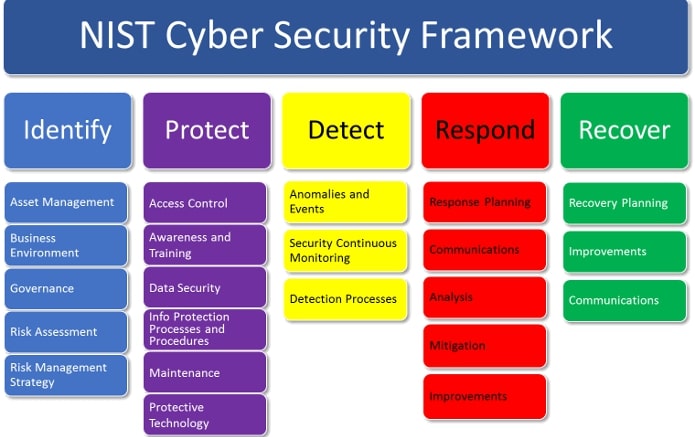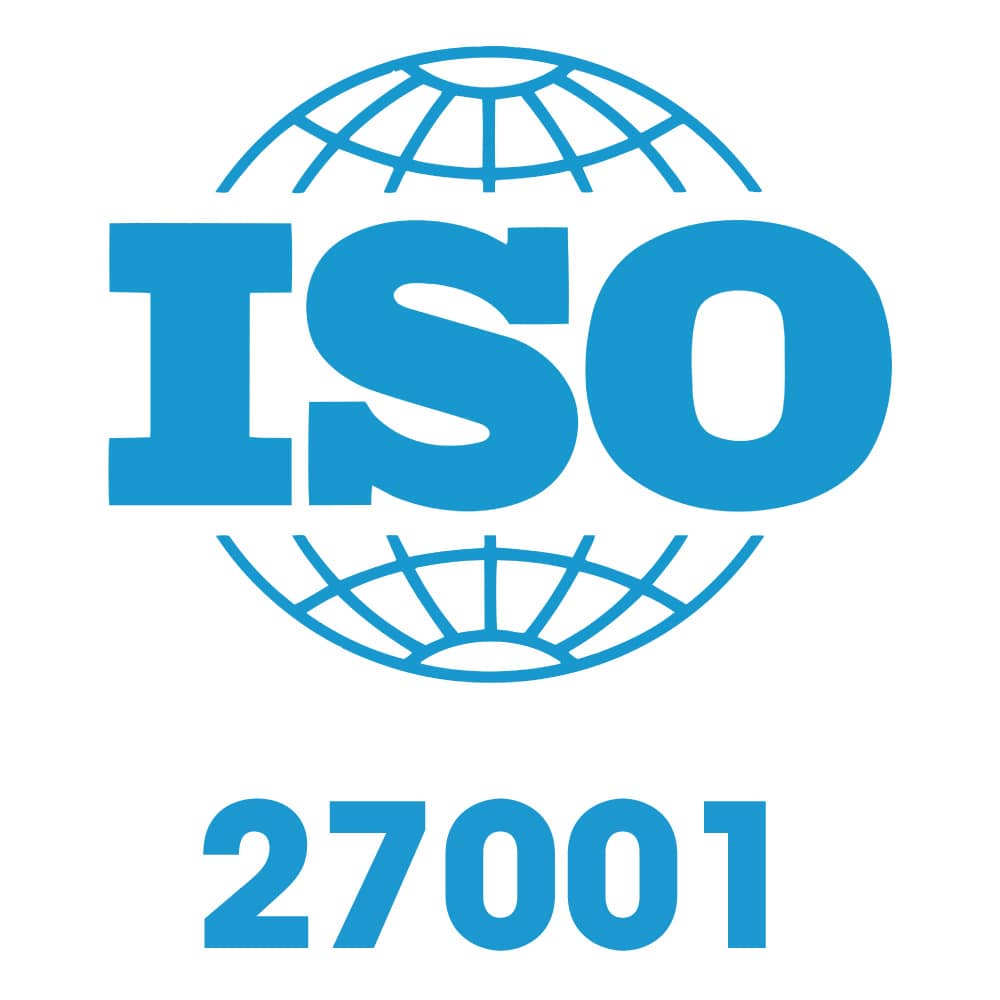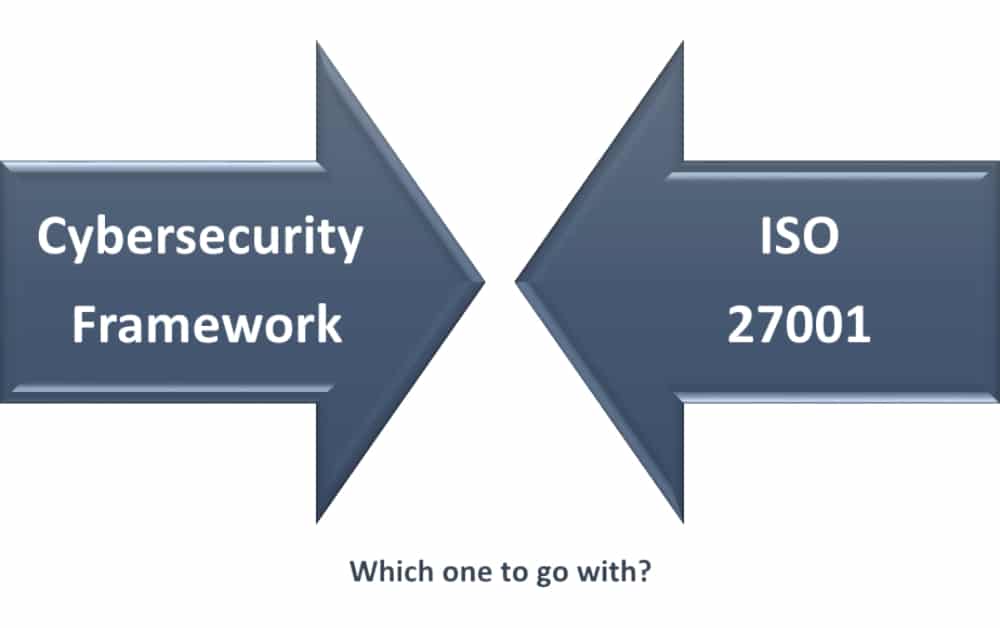Choosing a cybersecurity framework can feel overwhelming to organizations that haven’t yet begun the hard work to make their organization more secure. What seasoned organizations would tell their colleagues is this: Putting rigorous, best practice security controls in place allows you to meet any set of industry standards you want or need.
In this article, we’ll look at both the NIST and ISO frameworks to understand the value and costs associated with each, helping to inform the decision for your organization.
What is the NIST Cybersecurity Framework?
The National Institute of Standards and Technology (NIST) developed a cybersecurity framework (NIST CSF) to enhance the nation’s overall cybersecurity stance.
Although the NIST CSF is aimed at federal agencies and those companies in the government supply chain, the guidelines are applicable to any organization, from academia to private sector companies. NIST CSF includes standards and best practices to detect, prevent, and respond to cyberattacks.
The NIST CSF categorizes all cybersecurity capabilities, projects, processes, and daily activities into these five core functions:
- Identify
- Protect
- Detect
- Respond
- Recover
Organizations voluntarily follow NIST standards and may be asked to self-attest to a score of how well they adhere to certain standards for government contracting or other certifications. NIST does not provide any type of certification itself.

What is the ISO 27001 cybersecurity framework?
ISO 27001 is the leading international standard focused on information security, published by the International Organization for Standardization (ISO).
ISO 27001 provides a framework to help organizations of any size or any industry protect their information through the adoption of an Information Security Management System (ISMS). The framework uses a risk-based approach and is technology-neutral. It focuses on three dimensions of information security:
- Confidentiality
- Integrity
- Availability
A company can get certified against ISO 27001 standards, proving to others that it safeguards the data of its customers and partners. Individuals can also get ISO 27001-certified, demonstrating a set of skills to potential employers.
Because it is an international standard, ISO 27001 is recognized all around the world.

The difference between NIST and ISO 27001
When trying to determine which cybersecurity framework is right for your organization, it’s helpful to note the differences between NIST and ISO 27001.
In general, NIST was created to help U.S. federal agencies and organizations better manage their cyber risk, while ISO 27001 is an internationally recognized approach for establishing and maintaining an ISMS.
Other differences include risk maturity, certification, and cost.
- Risk Maturity: ISO 27001 is a good choice for organizations that are operationally mature or seeking certification, while NIST guidelines may be best for organizations that are developing a cybersecurity plan.
- Certification: ISO 27001 is a globally-recognized certification via third-party audit that can enhance an organization’s reputation. NIST does not offer certification.
- Cost: ISO 27001 charges to access their documentation while NIST CSF is available free of charge online. This is another reason organizations new to cybersecurity may want to get started by using NIST guidelines before making an investment in ISO 27001 certification.
The cost of NIST CSF and ISO 27001
NIST CSF is a free program provided by the U.S. government. Implementing NIST standards may be done using an organization’s internal resources or by an outside consultant with fees for the service depending on the level and sophistication of security controls needed.
Formal ISO 27001 training costs are estimated at $1,000 annually, depending on the company used for it. Implementation depends on the size and complexity of the management system, often requiring 6–12 months before an initial certification audit.
NIST CSF vs. ISO 27001: Which is right for your organization?

The cybersecurity risk management framework you choose for your organization depends on several factors: Your organization’s cybersecurity maturity, your business goals, your specific risk management needs, and the need for certification.
NIST CSF is a good place for most companies to start. The zero-cost guidance and standards are beneficial for any organization looking to boost its cybersecurity stance. NIST’s clear assessment framework can be used to conduct a self-assessment, offering a baseline before developing and implementing additional cybersecurity controls or to identify security gaps that require remediation.
ISO 27001 is a great choice for more mature organizations that have external pressure from customers or partners to be certified. Companies considering ISO 20001 can use the time it takes to prepare for the certification audit to also plan for the costs involved in the program.
Wherever your organization is starting from, NIST CSF and ISO 27001 can both be important to provide focus and clear standards to your information risk strategy.
With a strong background in IT consulting, government contracting, and thorough knowledge of commercial and federal cyber security compliance requirements, DTS is the ideal partner for sustainable cybersecurity solutions. Our thorough reviews examine the specific cybersecurity practices required for your compliance, from self-scoring programs to third-party assessors. We work with you, explaining each standard or practice, detailing what is required of your organization, identifying gaps in your practices, and providing remediation options. Visit our DTS: Contact page to schedule a consultation call.


